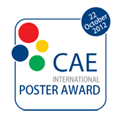
| |
EnginSoft - Conference Abstracts
EnginSoft International Conference 2010 |
Reliability evaluations on innovative Oil Pump under crankshaft torsional vibrations |
Testa Alessandro - Pierburg Pump Technology (Italy) |
Abstract |
Pierburg Pump Technology (PPT), is specialized in the design and production of Automotive mechanical and electrical oil, water and vacuum pumps, developing products for almost all the Automotive brands. Special care is dedicated by PPT to the development of innovative pumps able to satisfy the new European standards concerning the CO2 emissions. In particular PPT, is developing vane oil pumps able to reduce the engine CO2 emissions up to 2.5%. These type of pumps are technically more complex than the traditional gear pumps, so they need to be designed and verified by fluid-dynamic, structural and dynamic experts using the most advanced simulation tools. An interesting case of multi-disciplinary approach about vane pumps, has been performed by the calculation simulation group during the development of a new EURO5 engine of one of the most famous Automotive company. Main characteristics of this wide calculation activity is that the new engine is a gasoline engine revamping of a previous release, but with a power doubled (~180 HP) acting on the injection. So the challenge was to design a crankshaft driven pump (this was “the customer request”) with high performances and taking care about the fact that the crankshaft itself was a carry over by the previous release of the engine and so, subjected to torsional vibrations bigger than in the original release. So the technical challenge was played on: Fluid dynamic matter in order to verify and to prove the performances, dynamic matter in order to have a preview of the forces acting on the pump, and finally structural matter to verify and prove the robustness of the product. Calculations have been run in an interactive way between disciplines: the measured profile of torsional vibrations has been used as input for the multibody dynamic analyses together with the fluid dynamic loads evaluated by CFD analyses; the output of the multibody analyses (loads on the pump) have been finally used as input of structural analyses with particular care about the pump rotor which is the component coupled directly with the engine (the rotor is moved by the crankshaft). Interesting is the fact that the rotor of the pump is a rotating component, so the structural analyses have been performed applying the D’Alembert principle, allowing to “reduce” a dynamic problem, in an equivalent static problem. This wide calculation activity has been foundamental to provide indications about the design optimization of the pump rotor, about the choice of the material and also about some improvements interesting directly the engine (the customer has implemented in the engine a damper to reduce the torsional vibration effects). |
Back to index |



